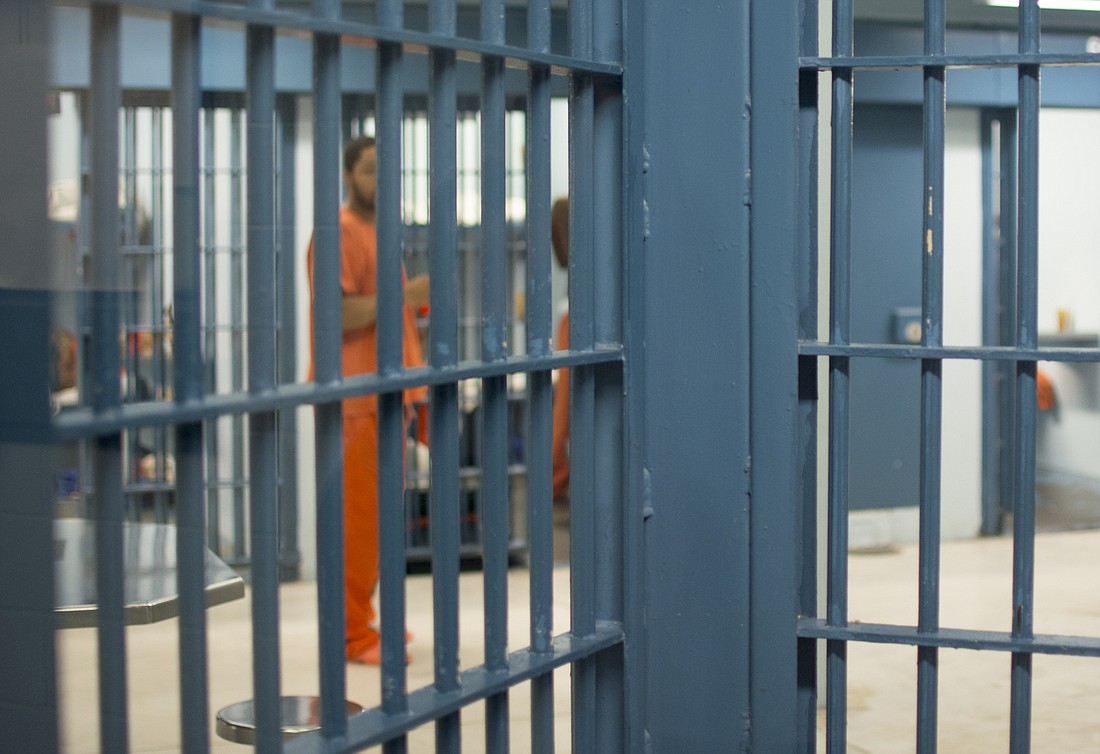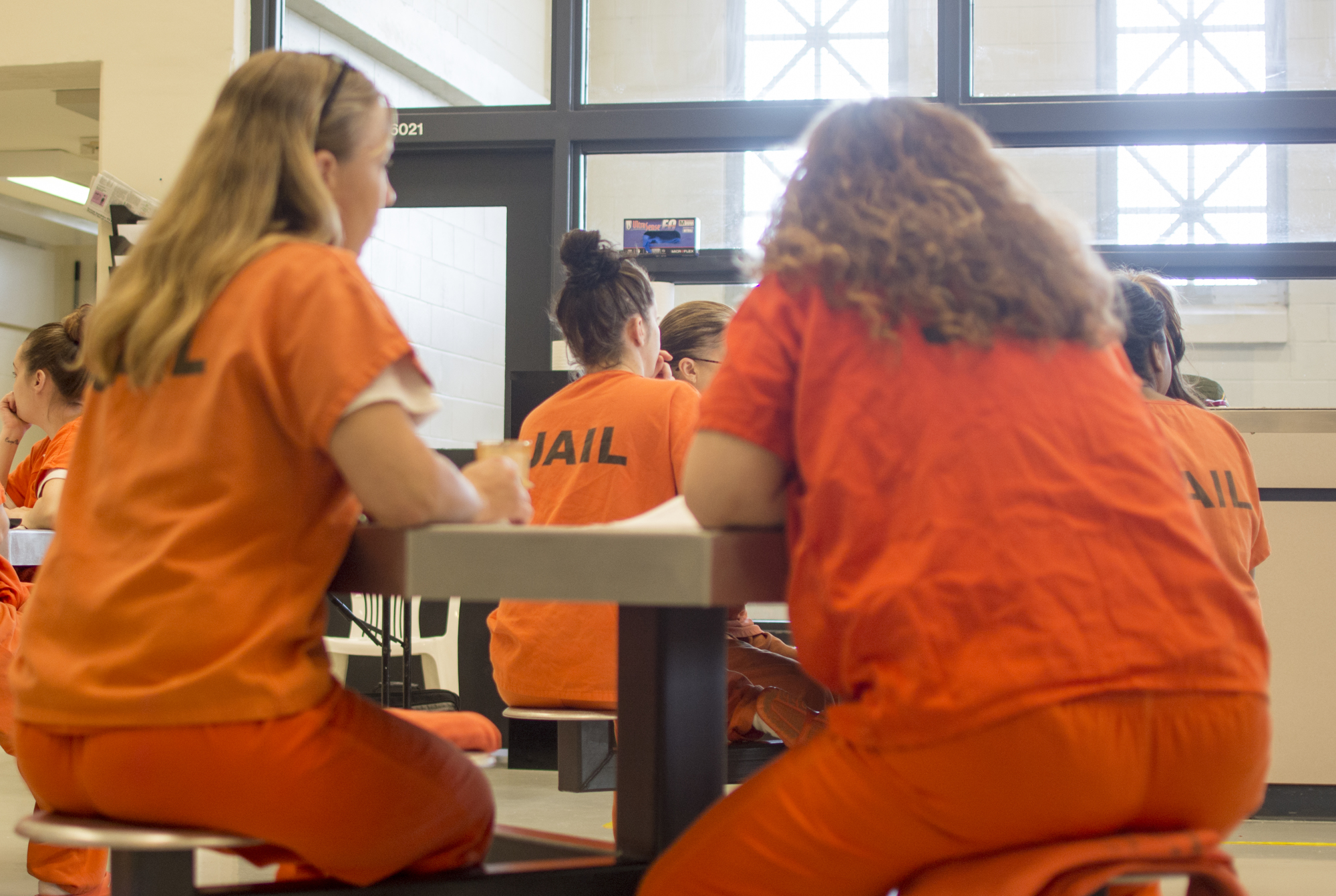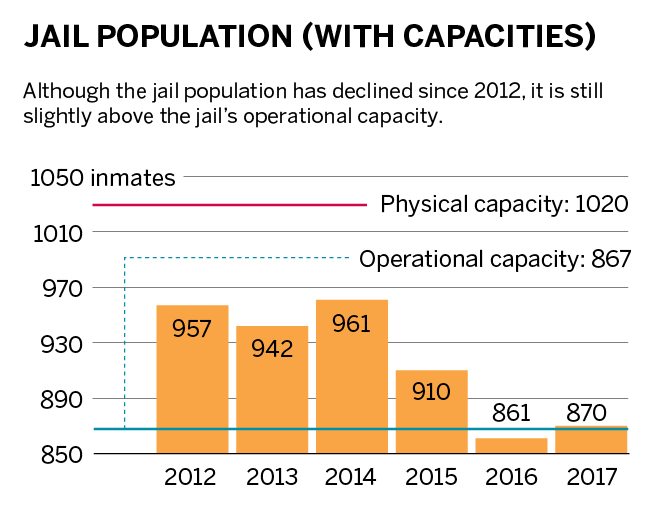- December 18, 2025
-
-
Loading

Loading

The Sarasota County Jail is at a crossroads, Sheriff Tom Knight said.
A conversation that died down almost a decade ago is restarting: Should the county build a new jail to house more inmates, or keep implementing programs to keep the jail’s population down?
The answer to that question, Knight said, is an ideological one. Does the County Commission believe that incarceration is the best way to reduce crime? Or does it believe in recovery and rehabilitation for people charged with crimes, particularly drug-related offenses?
In decades past, wings were added to the jail that followed different ideologies. After Knight was elected in 2008, he focused less on the jail’s architecture and more on cutting down misdemeanor arrest rates, which are now surpassed in the county by felony arrests.
Now, Knight is ringing the alarm bells for the County Commission: There’s a decision to be made about the future of the jail.
In many ways, the jail’s architecture demonstrates a shift in corrections ideology over decades.
In 1975, when the west wing was built, corrections relied on separating criminals from society. Jail staff can only see a portion of each block through narrow, barred windows — creating a higher potential for instances of self-harm than in other areas. Inmates and staff are separated most of the time.

“It was basically incarceration, incapacitation,” said Major Jeff Bell, Courts and Corrections Division commander.
The east wing, built in 1987, shares some of the challenges as the west wing, though staff has full visibility of each cell block via walls of windows.
Built in 2002, the north wing is not only indicative of an architectural shift, but an ideological one as well. It’s suggestive of the more recovery-based programs to come. The direct supervision design includes living areas, common spaces, recreational, bathroom and laundry facilities. Jail staff and volunteers administer programs to about 300 inmates.
“The fact that this wing is built in this fashion ... is absolutely in support of this philosophy of it’s not always best to lock them up and throw away the key,” Bell said.
It contradicts the ideology popular when the majority of the facility was constructed.
“If you look at it, that’s basically three old jails that are patched together,” Knight said. “You’re talking about an antiquated facility and antiquated way of how inmates are handled now.”
Yet, each wing serves a function. High-security inmates cannot be housed in the north wing, making some of what older wings offer a necessity. Now, the problem is less about architecture and more about the number of inmates.
Today, the jail population is about 900 inmates, most of whom are there less than a year.

With an operational capacity of 867, things are already tight. Physically, the jail can hold more than 1,000 inmates, who usually stay for less than a year. But that total is often impractical when considering the needs of separately housing men and women, juveniles and adults, misdemeanor offenders and felons.
Even as the jail population has declined since Knight took office, thanks in part to programs implemented to reduce the number of arrests and convictions for misdemeanors, there’s a need for improvement.
Knight believes that cutting down on third-degree felony charges and convictions in the jails — many of which are related to drug use or prior drug-related crimes — is the next step. Currently, 33% of all third-degree felony arrests were drug-related.
Further, 20% of inmates in custody are there for probation violations, which Bell said means they weren’t ready to go out on their own.
Since 2012, the Sheriff’s Office has implemented programs such as specialty courts, mental health screenings and recovery programs within the jail. But Knight and Bell said it’s not enough to keep the jail functioning.
“We’re at a crossroads now,” Knight said.
The jail is in trouble, from a population standpoint. Knight and Bell went before the County Commission on Oct. 10 to ask it to consider two options.
Option one is for the county to begin the process of planning and constructing a new jail, at an estimated cost of nearly $100 million.

This presentation comes on the heels of the county’s budget deliberations, which are continuing as commissioners choose where in their budget to cut millions of dollars.
The other option, which Knight favors, is for the county to implement more programs to reduce jail time for some inmates, particularly those with addiction problems — programs that focus on rehabilitation and second chances over incarceration.
“You don’t change people’s behavior and their addiction by locking them up,” Knight said.
Knight said a facility where people don’t need to be locked up, that’s protected by the Sheriff’s Office, that doesn’t have bars over the windows, that can house 80-100 people as they go through recovery programs, is all the jail would need to keep its capacity operational.
“It isn’t free, and it isn’t cheap.” Knight said. “But it’s cheaper than $80 million to $100 million, and it’s the right thing to do.”
The problem with that approach is that it will cost money too, and stakeholders like judges and prosecutors need to be on board, in addition to the County Commission and the sheriff.
“I’ve been here a long time. I’ve seen a lot,” Bell told commissioners. “If you believe in incarceration and incapacitation, then build a new jail. If you believe in treatment and rehabilitation, we’ll be able to work within the footprint we’ve got and hopefully manage it better.”
Knight asked commissioners to put a plan in place within a year.
Commissioners chose to table the discussion, and a date has not been set for them to discuss what they want to do.